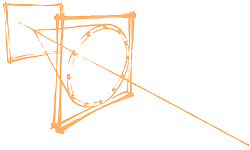Orateur
Prof.
Gianpiero Gervino
(Dipartimento di Fisica Sperimentale di Torino and INFN Torino)
Description
A prototype to detect the highest energy fraction of electrons emitted by beta decays based on Cherenkov radiation in silica aerogel has been realized in order to be used in nuclear astrophysics target activation esperiments and environmental radioactive pollution survey. The prototype detects the high end-point of beta radiation: silica aerogel with refractive index of 1.056 corresponding to electrons threshold of 1 MeV was chosen. Silica aerogels have refractive index from 1.01 to 1.09, are materials transparent in the visible 380-780 nm and their low density (rho=0.10 – 0.35 g/cm3) results in a reduced absorption of gammas and a longer path on which beta particles radiate Cherenkov photons. Very good background reduction has been achieved. Background reduction relies not only on the threshold energy but also on the shape analysis of the Cherenkov pulse which strongly depends on charge ionization density. The counter has been tested with a 90Sr-90Y beta source (Emax= 2.27 MeV, t1/2=64 h for 90Y, Emax=0.546 MeV, t1/2=28.5 yr for 90Sr) and it can measure down to an activity of 1 Bq of 90Y. Because the ratio 90Y/90Sr is known, the activity of 90Sr (under the threshold) could be computed. 90Sr is a pure beta emitter as well as its daughter 90Y and this method is used to evaluate 90Sr activity in groundwater and soil samples. 90Sr is highly toxic because it can be exchanged with calcium in the bones structures, it could be spread in the environment by nuclear power plants and it cannot be detected by gamma techniques. Background reduction is achieved without decreasing too much the efficiency that would result in the increase of the cross sections uncertainties for nuclear astrophysics experiments. We plan to used the counter also in target activation measurements to study the cross section of two reactions of astrophysics interest: 8Be(d, 2p)9Li and 7Li(d,p)8Li. In both case the final products are beta emitters with electrons end-point energy of 13 around MeV.
| Please indicate "poster" or "plenary" session. Final decision will be made by session coordinators. | poster |
|---|
Author
Prof.
Gianpiero Gervino
(Dipartimento di Fisica Sperimentale di Torino and INFN Torino)
Co-auteurs
Dr
Andrea Lavagno
(Dipartimento di Fisica, Politecnico di Torino and INFN Torino)
Dr
Antonio Scarfone
(CNR/INFM – Sezione del Politecnico di Torino and INFN Torino.)
Dr
Luciano Periale
(IFSI-INAF and INFN Torino)

